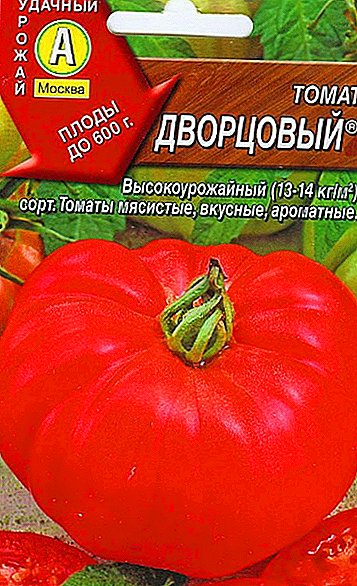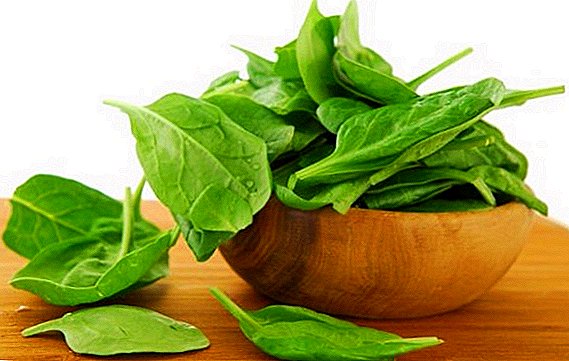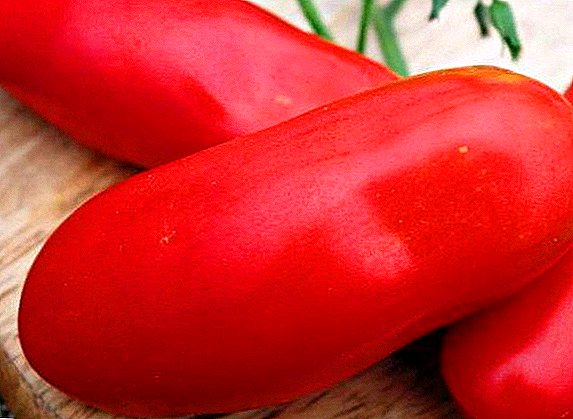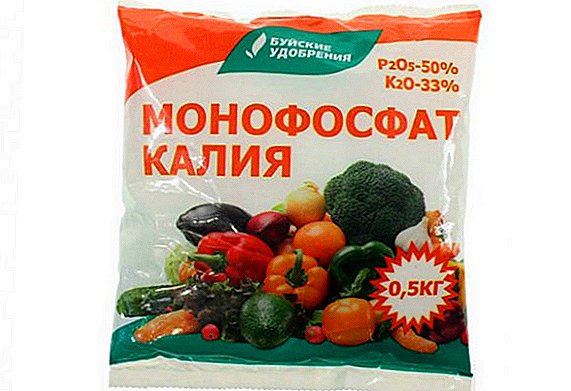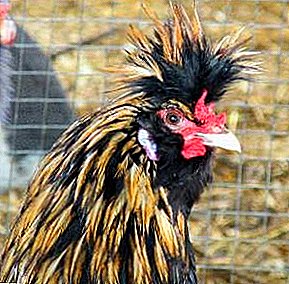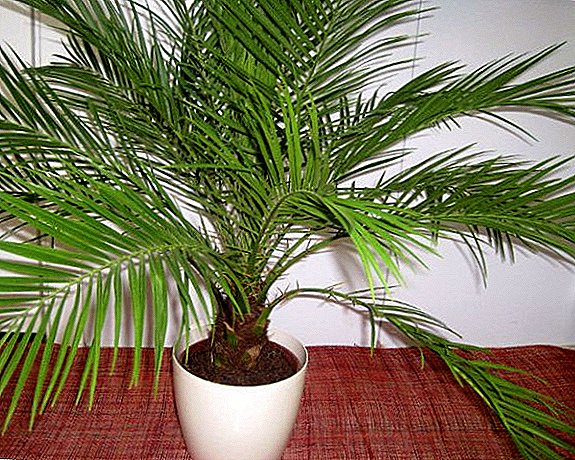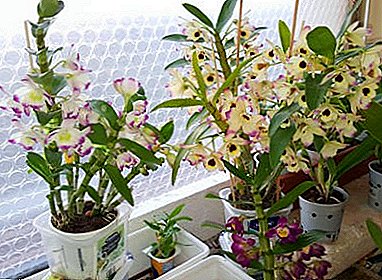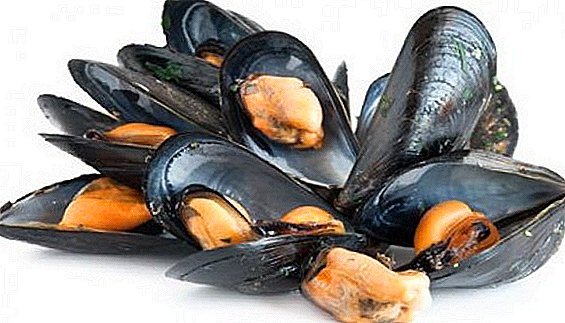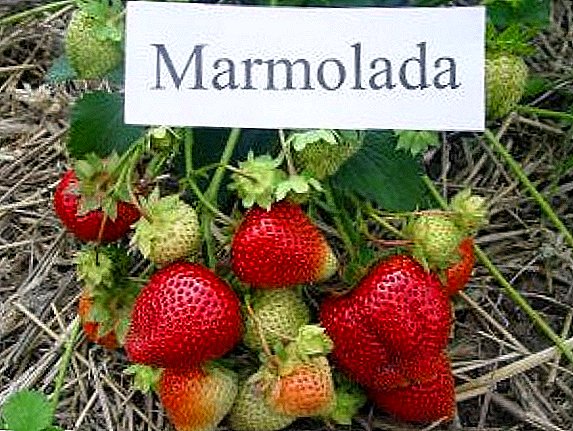 Strawberries, or garden strawberries - one of the most popular and favorite berries for most people. And this is not surprising, because it has a unique taste and aroma that does not look like anything else. There are many varieties of these berries, and each of them has its own characteristics. This article will discuss one of the most promising varieties of strawberries - "Marmalade".
Strawberries, or garden strawberries - one of the most popular and favorite berries for most people. And this is not surprising, because it has a unique taste and aroma that does not look like anything else. There are many varieties of these berries, and each of them has its own characteristics. This article will discuss one of the most promising varieties of strawberries - "Marmalade".
About breeding
Thanks to the Italians for such a luxurious strawberry, because in 1989 they bred this variety. In order to get "Marmalade", the varieties of "Gorela" and "Holiday" were crossed.
Did you know? Despite the fact that strawberries are very sweet, they contain a minimal amount of sugar, even less than lemon.
Biological description and appearance
To skillfully distinguish "Marmalade" from other varieties, you need to know its external features. 
Bushes
The variety has a fairly powerful, but at the same time compact bush. It is tall (up to 30-40 cm), spreading, with a large green part and many shoots.
The leaves on the bush are raised and have a dark green color.
Inflorescences are numerous, directed upwards and raised above the leaves. Blooms profuse, and the flowers themselves are white in color.
Berries
Berries varieties "Marmalade" have a number of features, for which this strawberry is loved by many gardeners:
- fruits are large (25-30 g), sometimes very large (up to 40 g);
- regular conical shape with a sharp and slightly flattened tip;
- color bright red;
- berries are dense, but at the same time juicy and very sweet (with light sourness);
- pronounced aroma.

Varietal features
To obtain a high-quality crop, it is necessary to take into account the characteristics of the variety.
Drought resistance and frost resistance
"Marmalade" resistant to low temperatures, but in cold (below -15 ° С) and light snow winters require shelter. If the winter is snowy, then the strawberries can withstand temperatures up to -30 ° C.
Variety tolerates drought well, but regular and regular watering is still desirable, otherwise the fruits will lose their juiciness and attractive appearance. At the same time, excessive watering for bushes is destructive.
Ripening period and yield
Marmalade has an average ripening time. Variety gives a good harvest. From one bush can be collected from 700 g to 1 kg of berries. It is important that with proper care and suitable climatic conditions, the bushes can bear fruit and 2 times per season.
Did you know? Due to the presence in its composition of vitamins of group B, strawberries are very useful for the nervous system and are recommended for use by people with a lot of stress.
Transportability
Despite its juiciness, strawberries of this variety are well harvested and transported over long distances. Berries do not crumple and do not let the juice, even when transported in boxes with a layer up to 20 cm. 
Application
Due to its taste, strawberry variety "Marmalade" has a wide range of applications:
- It is consumed raw, made from it various desserts and sweets;
- berries are made from jams and preserves;
- apply fruit for cosmetic purposes (skin, hair).
Familiarize yourself with the recipes for preparing strawberries: jam, marmalade, candy, compote, tincture, frost.
Where to plant on the site
Variety "Marmalade" is very popular among amateur gardeners, and for growing for sale. But in order for the crop to be worth the effort, it is necessary to comply with the cultivation technology.
The quality of the future harvest depends on how the place was chosen and the plants were planted:
- The soil must be neutral. Acidic soils must be further lime, otherwise the crop will be significantly lower and worse in quality.
- The site is desirable to choose sunny, with a small amount of shade. The complete absence of sunlight will negatively affect the quality of the fruit.
- Close groundwaters have a detrimental effect on planting, so they should be avoided.
- If the climate itself is humid, then the bushes should be located on the elevated parts of the site.
Learn how to plant strawberries in autumn and spring, under covering material, in a greenhouse, using Dutch technology, to grow from seeds.
If booths (potatoes, tomatoes) grew on the plot, then it is not recommended to plant strawberries on it, as they greatly deplete the soil resources.
The best predecessors of strawberries on the site are carrots, beets, cucumbers or lettuce. 
How to plant seedlings
For proper planting, you must adhere to technology and follow instructions:
- The most favorable time for landing is the end of August. In this case, the harvest will ripen only for the next season, but over the winter the bushes will root well and grow stronger.
- The distance between the bushes should be about 30-35 cm, and between the rows - 50 cm. This is due to the fact that the bushes are powerful enough and require space for full growth.
- Roots must fit freely in the hole.
- The seedling needs to be filled up with earth not very tightly, so that the root system has access to oxygen.
- Immediately after planting, the bushes must be watered to accelerate the growth and better state of health of the plant.
Important! To obtain the highest quality harvest, the strawberry plot should be prepared from the spring: sow with green mane, which are mowed in August, and fertilize with all the necessary soil types in the selected plot.
Home care
After the place is chosen correctly and proper planting is carried out, strawberries need quality care:
- The best way to water is drip irrigation. If this irrigation is not possible to provide, then watering will have to be done manually. The frequency depends on climatic conditions in general and the weather conditions in particular. On average, watering plants should be 1 time in 4-7 days, the frequency of watering at different times of the season is approximately the same, the difference is in the amount of water used. If it rained, the next watering can be canceled. In hot periods, water consumption per 1 square. m. is 20 liters, and in the cooler - 10-12 liters. It is important to remember that the lack of moisture significantly affects the quality of the berries, making them less juicy and beautiful.
- In order that the beds do not turn into thickets, it is necessary to regularly trim the antennae on the bushes. The most favorable time for this procedure is autumn, when the entire harvest is already gathered. In the first year, it is advised to cut off absolutely all antennae and flowers, which will give the plant more strength to grow.
- Loosening is a mandatory procedure after watering. It should be carried out to a depth of 8-12 cm, but be careful, otherwise you can damage the root system. At the same time, removal of weeds that have formed since the previous weeding is carried out. It is important to remove unwanted plants from the root, otherwise they will grow back quickly.
- Transplant for "Marmalade" is needed every 3 years. Only in this case, the berries will be of proper quality and in the desired quantity.
- Mulching is an important element for the well-being of plants in both summer and winter. In the summer, to preserve moisture, you can mulch with sawdust or even cardboard. But in the winter it is advised to do this with the help of fir branches and agrofiber (or other nonwoven material) on top. This will help the plants survive the cold.
- Preventive measures are desirable to perform, despite the fact that the variety is very resistant to various lesions (diseases and insects). To do this, you need to timely spray the bushes with fungicides and insecticides. This should be done strictly according to the instructions for the drugs and at a specific time.
- To obtain a quality result, dressing is a mandatory item. Moreover, the plant responds positively to both mineral and organic fertilizers.
 For good nutrition exercise fertilizing is necessary in several stages:
For good nutrition exercise fertilizing is necessary in several stages:






- before planting, it is necessary to dig up the soil with peat and humus (5-8 kg per 1 sq. m);
- after the appearance of the first leaflets, nitrogen supplementation is carried out; urea is best suited (30 g per 1 bucket of water);
- during flowering potassium nitrate is used (25 g per 1 bucket of water), which flows strictly under the root;
- before the beginning of the winter cold, rotted manure (1 bucket) and ash (1 cup) are used.
Learn more about drip irrigation: advantages of use, organization of automatic drip irrigation, selection and installation of drip tape, drip irrigation from plastic bottles.Read also about the care of strawberries: dressing in spring and autumn; leaving in the spring (during flowering), after harvest, in the fall.
Advantages and disadvantages
Strawberry "Marmalade" has numerous pros:
- beautiful appearance;
- rich taste and aroma;
- unpretentiousness and relative ease of growing;
- the possibility and convenience of transportation;
- high resistance to diseases and various weather conditions.
 But does this variety have cons? Yes, like any plant, it has its own weak sides:
But does this variety have cons? Yes, like any plant, it has its own weak sides:
- if rainy weather is observed during the ripening period, the fruits ripen poorly, become softer and less sweet and fragrant;
- dense placement of the bushes in the garden makes the fruit smaller;
- fully manifests its potential only on neutral soils, in other cases the quality of the crop decreases;
- berries are subject to certain diseases (white and brown spot).
Read also about the methods of combating diseases and pests of strawberries: fusarium and verticillium wilt, redness of the leaves, nematodes.
Video: 'Marmolada' review
Strawberries 'Marmolada': gardeners reviews



Having the desire and a little experience, you can make a business card of your plot out of garden strawberry varieties "Marmalade". After all, large and tasty berries will not leave indifferent any of your loved one or guest and will be remembered by anyone who tries them for a long time.


 For good nutrition exercise fertilizing is necessary in several stages:
For good nutrition exercise fertilizing is necessary in several stages: